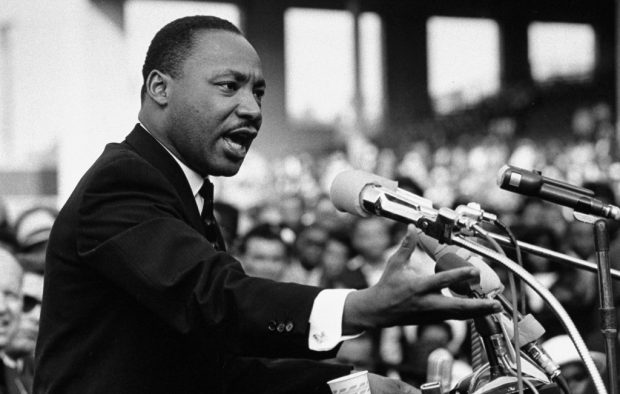Celebrating MLK: How to Improvise an Iconic Speech for the Ages
October 2017

"I have a dream that little children will one day live in a nation where they will not be judged by the color of their skin but by the content of their character."
Rev. Martin Luther King, Jr., August 23, 1963, Washington, DC
It is the most famous speech in the 20th century by one of the most inspiring orators in our country's history. While the Reverend Martin Luther King, Jr., began with prepared remarks, the most famous part of the speech containing the theme I have a dream was created on August 23, 1963 as King addressed the crowd of over 250,000 on the Mall in Washington, DC.
Tell 'em About the Dream
King's speechwriter, Clarence B. Jones, tells this story in his book Behind the Dream, written in 2011. The story was told in an article in Forbes online in 2013.
In the seventh paragraph, something extraordinary happened. King paused. In that brief silence, Mahalia Jackson, a gospel singer and good friend of King’s, shouted “tell ‘em about the ‘dream.’” Few people heard her, with the exception of Jones, Ted Kennedy, and, of course, King. Here’s what happened next. Jones saw King “push the text of his prepared remarks to one side of the lectern. He shifted gears in a heartbeat, abandoning whatever final version he’d prepared…he’d given himself over to the spirit of the moment.” Jones leaned over to the person standing next to him and said, “These people out there today don’t know it yet, but they’re about to go to church.”
King improvised much of the second half of the speech, including the “I have a dream” refrain. Improvise means “to deliver without prior preparation.” It does not mean that King completely made up the words on the spot. In fact King delivered the now familiar refrain, or at least a version of it, two months earlier at Cobo Hall in Detroit. Remarkably, if you read the text of the Detroit event, you’ll see that he did not recite the same sentences word for word. His mesmerizing words and sentence structure were truly delivered extemporaneously. It’s an example of rhetorical dexterity at its finest.
You can read more about how the speech was written and then improvised here. Or watch the speech here and look for the moment yourself.
Indeed, King himself commented on his decision to go off script later that same year, though he did not mention whether or not he heard Jackson. (Read this article by Henry Louis Gates, Jr., on pbs.org (originally posted on The Root) for more on how the gospel singer shaped this speech by repeatedly imploring King to tell the crowd about the dream.)
Three months later, King explained his decision to go off-script: “I started out reading the speech … just all of a sudden — the audience response was wonderful that day — and all of a sudden this thing came to me that I have used — I’d used it many times before, that thing about ‘I have a dream’ — and I just felt that I wanted to use it here”
We Cannot Walk Alone
King's speech came at the end of the long day in the thick of the thick August humidity in Washington, DC. Over 50,000 unionists, including members from our parent union AFSCME, took part in the March on Washington for Jobs and Freedom that preceded the speeches that day (Click here to look at an article written about the day in AFSCME's member newsletter, Public Employee, later that year). Also forgotten by time were some details provided in the AFSCME newsletter, below.
Leaders of the March met with Congressional leaders before the demonstration and more than 150 Congressmen and Senators attended the Lincoln Memorial program. At the conclusion they met with President Kennedy at the White House.
...The March leaders spent more than an hour with the President discussing the March and the prospects for civil rights legislation.
...Leaders of the three major religious faiths spoke, as did heads of Negro organizations. James Farmer, former AFSCME organizer, and now national director of the Congress of Racial Equality, was absent. Along with 231 “freedom fighters” he was in jail in Donaldsonville, La.
Roy Wilkins, executive secretary of the National Association for the Advancement of Colored People, declared that “we expect the passage of an effective bill. … If those who support the bill will fight, as hard and as skillfully for it as the Southern opposition fights against it, victory will be ours.”
Rev. Martin Luther King asked that “the marvelous new militancy which has engulfed the Negro community must not lead us to a distrust for all white people, for many of our white brothers … have come to realize that their destiny is tied up with our destiny. … We cannot walk alone.”
This is the third in our series of posts about Martin Luther King, Jr., to mark the 50th anniversary of his assassination in Memphis, Tennessee, on April 4, 1968. Read the second installment here.
Next, read the fourth installment here, about the ten days in December 1964 where King accepted the Nobel Peace Prize and then joined workers on strike.
